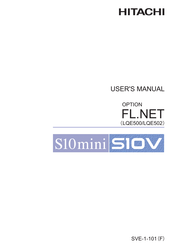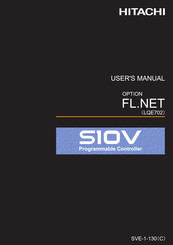Hitachi FL.NET Manuals
Manuals and User Guides for Hitachi FL.NET. We have 2 Hitachi FL.NET manuals available for free PDF download: User Manual
Hitachi FL.NET User Manual (307 pages)
Option
Brand: Hitachi
|
Category: Industrial Electrical
|
Size: 2.56 MB
Table of Contents
-
1 Overview
29 -
-
-
-
5 User Guide
53-
Ethernet54
-
FL-Net62
-
Sending Setups196
-
Setup IP Address198
-
Printing202
-
CSV Output204
-
Maintenance206
-
Troubleshooting210
-
Appendixes225
-
IP Address239
-
Advertisement
Hitachi FL.NET User Manual (243 pages)
option for S10V
Brand: Hitachi
|
Category: Controller
|
Size: 2.01 MB
Table of Contents
-
1 Overview
32 -
-
-
-
5 User Guide
56-
FL-Net57
-
-
-
Installing170
-
Uninstalling172
-
-
Operating Method178
-
Network Status184
-
RAS Information185
-
Saving Setups186
-
Sending Setups187
-
Setup IP Address189
-
Printing191
-
CSV Output193
-
-
6 Maintenance
196 -
-
Procedure201
-
-
8 Appendixes
214-
-
IP Address216
-
Subnet Mask217
-
Port Numbers217
-
-
FL-Net Profile233
-
Advertisement

